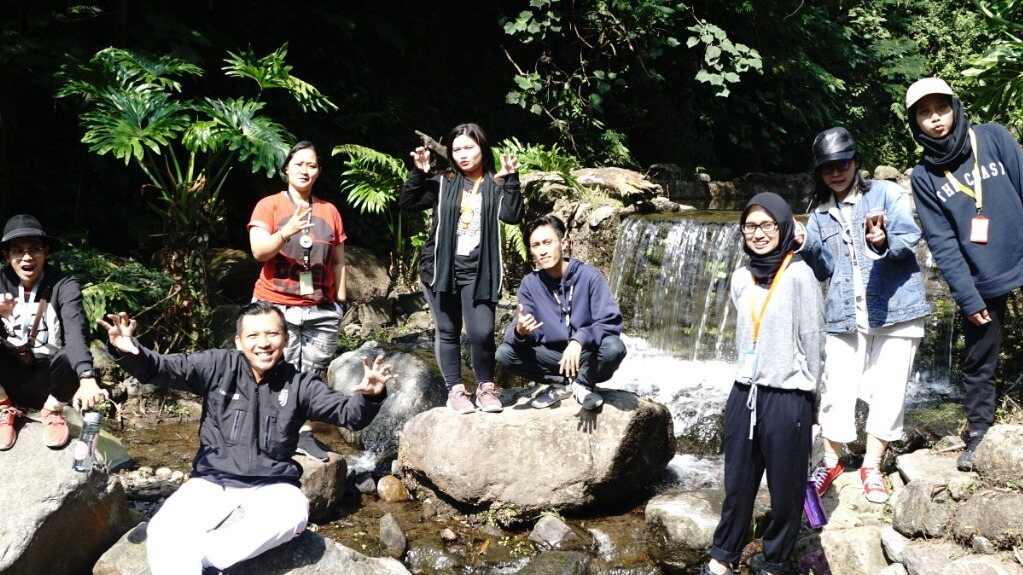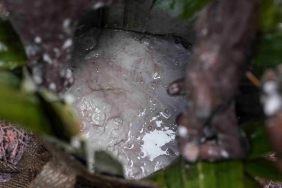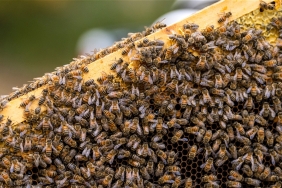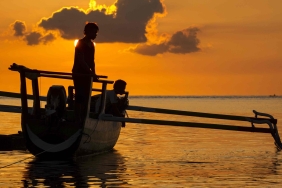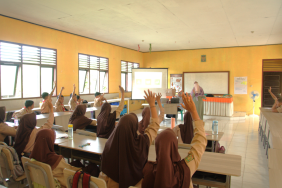REWARD TRIP TO THE OLDEST SITE
On a visit to a school with Panda Mobile, I told them about the animals protected by WWF-Indonesia. "So, younger siblings, there are six umbrella animals, one of which is the rhino. In Indonesia, there are two types of rhinos, namely the Javanese Rhino and the Sumatran Rhino. The Javanese rhino is found in the western tip of Java Island, precisely in Ujung Kulon." Then a child asked, "Have you ever seen a rhino?" Hearing that question reminded me of a visit to the Javan Rhino habitat some time ago.
After joining as a volunteer Panda Mobile from 2015, I had the opportunity to visit one of WWF-Indonesia's oldest sites located in Ujung Kulon. WWF-Indonesia has been conserving Javan Rhinos in Ujung Kulon since 1962. The opportunity came to me and Raisha as the volunteers with the highest flight hours in 2019.
Friday, September 20, 2019, Raisha and I gathered at Graha Simatupang to depart for Ujung Kulon with other WWF-Indonesia staff and team. It was a long and tiring journey to get there. Upon arrival, we were greeted by Mang Oji as the Restoration Officer of WWF-Indonesia Project Ujung Kulon. Mang Oji told us about the characteristics of the flora and fauna in Ujung Kulon. "Here there are not only Javan Rhinos, but also bulls, jungle cats, gibbons and many more. Ujung Kulon also has diverse flora spread across coastal forests, freshwater swamp forests, and other forests with different vegetation." In addition, he also explained about the urgency of Javan Rhino conservation and the conservation efforts that WWF-Indonesia has made. Afterwards, we were invited to spend the night in the village closest to the gate of Ujung Kulon National Park. I was very excited as we were getting closer to the "home" of one of the umbrella animals.
The next day, we were invited to trek into Ujung Kulon National Park through the usual path used by the rangers and WWF-Indonesia patrol team. After walking for more than six hours through the mangrove forest, we arrived at the WWF-Indonesia-assisted mangrove planting site. There we were invited to discuss with the Bayawak team who shared their experience and pride in being part of WWF-Indonesia to preserve the environment through planting mangrove seedlings. We got ten mangrove seedlings to plant directly. All participants felt happy after planting their own seedlings. The process of planting mangrove was not easy, I did it with full struggle on slippery and muddy terrain. In fact, the Bayawak team was able to plant more than 1,000 mangrove seedlings per day. Incredible!
After planting the plants, we continued our journey by speed boat to do snorkeling activities around Ujung Kulon National Park. The other participants and I were stunned to see the poor condition of the corals and fish. It turned out that the area was affected by the tsunami that occurred a few months before our arrival. Sadness mixed with emotion to see the condition of the underwater ecosystem there. This tiring and memorable day was closed with dinner provided by the local residents where we stayed. We enjoyed it with the wind and the waves of Taman Jaya Pier.
Dawn came, we started the last day of reward trip Ujung Kulon by visiting several Field Schools initiated by WWF-Indonesia such as Field School Lumbung Pangan Hidup (SL-LPH). The women there gathered and made planting media from straw and goat manure wrapped in banana leaves. This planting media is then distributed to local residents to plant plant seeds that they will later consume themselves. Those of us who live in cities can also follow the example of the women at SL-LPH by planting vegetables and fruits in our own yards. The visit continued to the Honey Bee Field School that produces teuweul honey, the sweet that characterizes the area.
The existence of field schools assisted by WWF-Indonesia is very much felt by the local residents. The SL-LPH women showed their gratitude for the better economy after receiving guidance and training in making planting media. The mothers said that they can save money on shopping with the presence of fruit and vegetable gardens in the yard. Often, they share the bountiful harvest with neighbors in need. Kang Tolib, one of the members of the Honey Bee Field School, admitted that he was helped by the cultivation of teuweul bees. He does not need to hunt for forest honey by climbing trees as high as 40-50 meters. Moreover, teuweul bees are small and do not sting, making them safe for farmers like him.
The existence of conservation heroes like Mang Oji is needed to support WWF-Indonesia's conservation efforts. In addition, the empowerment of local residents is also crucial in supporting the survival of flora and fauna in Ujung Kulon. The reward trip is an unforgettable experience that triggers our enthusiasm to continue conducting environmental education with WWF-Indonesia's Panda Mobile. You can also take part in environmental conservation efforts by adopting a green lifestyle or by registering to become a WWF-Indonesia Mobile Panda volunteer.
Sustainable Greetings!

